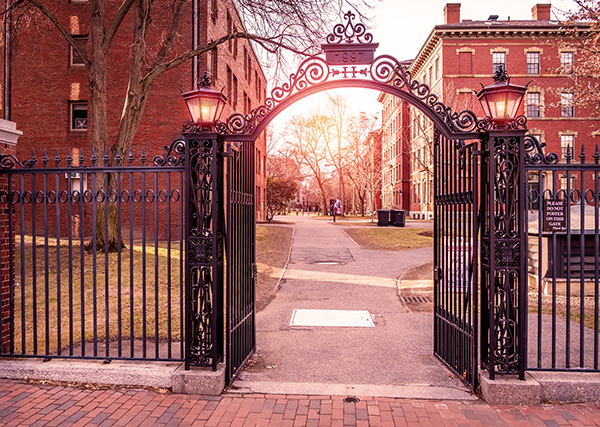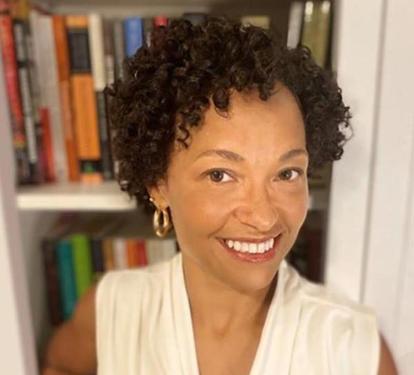The Upcoming Supreme Court Ruling on Affirmative Action: Why It Matters
 Last October, the US Supreme Court heard oral arguments in two separate cases about the consideration of race in college admissions: Students for Fair Admissions (SFFA) v. University of North Carolina and Students for Fair Admissions v. Harvard University. The Court’s final decision is expected by June as the court wraps up its work for the 2022 session.
Last October, the US Supreme Court heard oral arguments in two separate cases about the consideration of race in college admissions: Students for Fair Admissions (SFFA) v. University of North Carolina and Students for Fair Admissions v. Harvard University. The Court’s final decision is expected by June as the court wraps up its work for the 2022 session.
Many experts expect the Court’s conservative majority to rule against affirmative action. If so, colleges and universities will no longer be able to consider race as part of their admissions decisions, many for the first time since the civil-rights era. The decision would have sweeping effects on admissions and the composition of students on college campuses across the nation. When the University of California schools were forced to stop using affirmative action in admissions more than 15 years ago, Black and Latinx enrollment fell by half in the first year at the UC Berkeley and Los Angeles campuses, according to Insider Higher Ed. Since then, the University of California system has spent more than a half-billion dollars on using race-neutral measures to increase student diversity, but all have fallen short.

So, what would happen in a future without affirmative action? Literature professor Sara Clarke Kaplan, executive director of AU’s Antiracist Research and Policy Center, is one of the nation’s leading voices on race and racial justice. Here, she helps us understand the role of race and college admissions—the policy itself, its history and importance, why this issue is so critical in higher education.
Q. What exactly is affirmative action?
When we talk about affirmative action, we often imagine that it’s a single policy or program. But the term actually refers to a range of approaches to increasing equity by improving access to social and economic opportunities for people from historically and currently underrepresented groups. Those opportunities might be for employment or for higher education, for acquiring small business loans or being awarded a government contract. After all, these each are areas in which women, people of color, disabled people, and others have been excluded from full and equal participation due to historical and ongoing structural barriers. Affirmative action programs recognize and respond to those inequities.
In the case of the current legal challenges to higher education admissions practices at Harvard University and the University of North Carolina, what we see being called ‘affirmative action’ is more accurately described as race-conscious admissions. This means that when colleges and universities review applications, the applicants’ race is one of many factors considered alongside their academic record. While these policies vary from institution to institution, they are rooted in the common knowledge that there are still substantial structural barriers to racial equity in higher education, and a shared belief that enrolling a student population that reflects the racial and social diversity of the United States offers immeasurable benefits to all of us.
Q. What is the history that got us to this point?
When affirmative action first emerged under Presidents Kennedy and Johnson, it was in the context of the Civil Rights Movement and the passage of the 1964 Civil Rights Act. At that time, affirmative action was seen as a vital policy tool for addressing ongoing racial discrimination, as well as rectifying the entrenched racial inequities created by centuries of legalized captivity, exclusion, exploitation, and disenfranchisement. But in little more than a decade, the legal terrain changed dramatically. When the Supreme Court heard its first legal challenge to affirmative action, Regents of the University of California v. Bakke, it held that race-conscious admissions policies should subjected to ‘strict scrutiny,’ requiring universities to prove a compelling interest in the outcome of such policies in order to justify their ongoing existence.
The Bakke decision opened the door for a 40-year political mobilization against race-conscious admissions that has taken place in both the courts and voting booths. On one hand, organizations such as Center for Individual Rights and Students for Fair Admissions have actively recruited Asian American and white students to initiate suits for racial discrimination against colleges and universities to which they have been denied admission. On the other hand, state-level political actors have initiated a series of ballot measures rendering race-conscious admissions illegal on a state-by-state basis. Both strategies have effectively depicted race-conscious admissions as archaic and discriminatory, Black and Latinx students as unqualified recipients of unfair racial preferences, and Asian American and white students as victims of so-called ‘reverse racism.’ All three of these strategies—litigation, ballot initiatives, and popular messaging—have culminated in the two cases currently under deliberation by the Supreme Court.
Q. What are some of the misconceptions about affirmative action?
Great question! Addressing common misconceptions about affirmative action is important because we find that often when people say they oppose race-conscious admissions other forms of affirmative action, they are basing their opinions on widespread misunderstandings or misrepresentations. That’s why the Antiracist Research and Policy Center recently launched an online public education campaign highlighting the top eight myths about affirmative action.
Misunderstandings of affirmative action in general tend to fall into two connected categories: how these policies work, and who they affect. For example, we often hear terms like ‘racial quotas’ or ‘racial preferences’ to describe affirmative action. In reality, quotas—established minimum or maximum numbers for people from a particular racial, gender, or religious category—have been prohibited in the United States since 1978 and are not used in any current approaches to affirmative action. And rather than giving a unique or special preference or advantage to BIPOC (Black, Indigenous, and People of Color) people, affirmative action programs seek equitable representation for people from many protected categories, including gender, ethnicity, and (dis)ability. In fact, over the last 50 years, white women have been the primary beneficiaries of affirmative action. Moreover, in college and university admissions, there are numerous characteristics that admissions officers consider positively when assembling an incoming class, of which race is only one. An applicant’s hometown, athletic skills, socioeconomic status, or relationship to alumni, donors, or university employees are all factors that might improve chances of admission. These forms of ‘preference’ are understood as the exercise of institutional interest and are rarely subjected to the negative attention that affirmative action is.
Right now, a common fallacy is that race-conscious admissions discriminate against Asian Americans by creating a cap on their admission. That argument is at the heart of the case Students for Fair Admissions has lodged against Harvard University, but it’s not born out by the facts. In fact, scholars of Asian American politics have noted that the percentage of Asian American applicants admitted to Harvard has increased 29 percent in the last ten years and that Asian Americans make up over 20 percent of Harvard’s student population. There is no doubt that there is a long and documented history of anti-Asian racism and xenophobia in many US institutions, including higher education. Instead of examining that history of structural racism, however, SFFA’s argument pits historically marginalized and excluded groups against each other.
Q. So, why is affirmative action important for racial equity in higher ed (and beyond)?
Nearly 50 years into the affirmative action debate, some facts remain incontrovertible: first, that there remain profound socioeconomic, regional, and racial disparities in educational access and opportunities in the United States and those disparities create structural barriers to higher education. Second, that in the absence of programs that actively combat racial discrimination, Black and Latinx applicants are less likely to be admitted to colleges and universities than white applicants with the same qualifications. We know this from research, and we know this from witnessing the impact that prohibiting race-conscious admissions had on the racial makeup of colleges and universities in states like California and Michigan.
One of the most disappointing elements of the Bakke decision was that the Court rejected the argument that universities have a compelling interest in remedying the impact of historical racial discrimination or in reducing ongoing societal inequities. Those of us who work in higher education know that colleges and universities can be vital partners in the project of catalyzing change, fostering racial justice, and increasing social equity. But that requires institutions of higher education to themselves be accessible and equitable. Affirmative action has been a critical, if partial, tool for achieving those goals.
Q. What next?
I’m not a legal scholar, so I can’t speak with any certainty to the outcome of the two cases currently before the Court. Regardless of their outcome, however, I think it’s a critical time for to collectively seek out new tools and methods for addressing challenges to educational justice in the US. Right now, we are in the midst of a national conflict about who should have access to education, what concepts and histories they will be allowed to learn, and even how they can identify themselves. My hope is that whatever the Court’s decision, we see this as an opportunity to rearticulate the important role of educational institutions in fostering racial equity and social justice.
